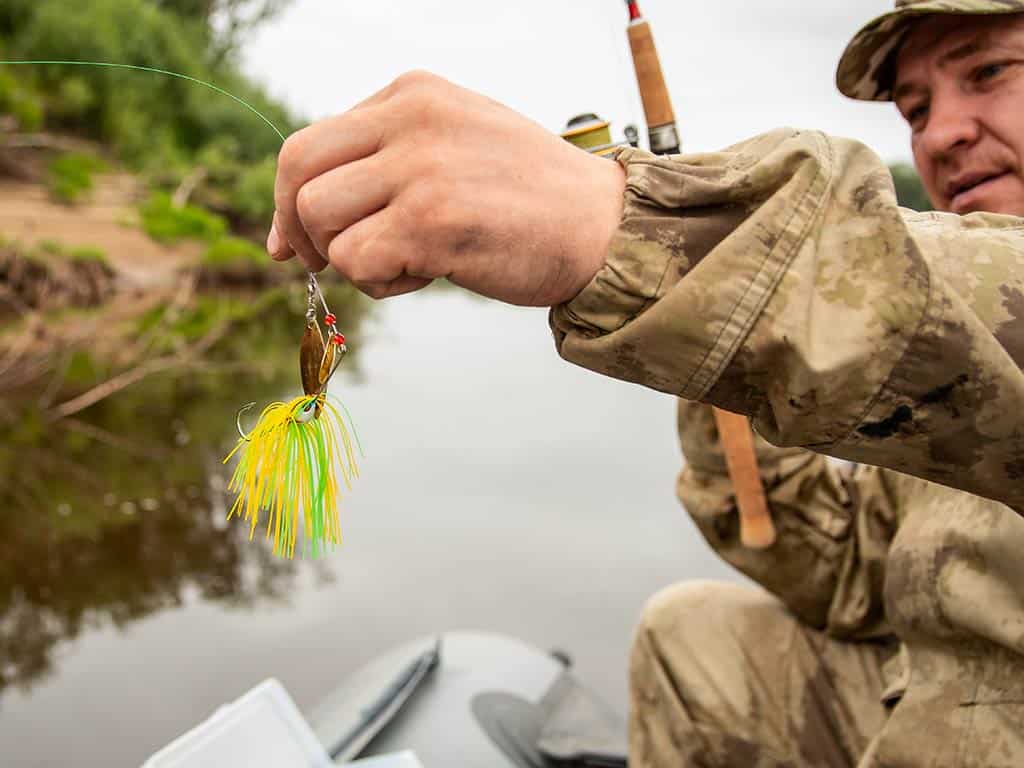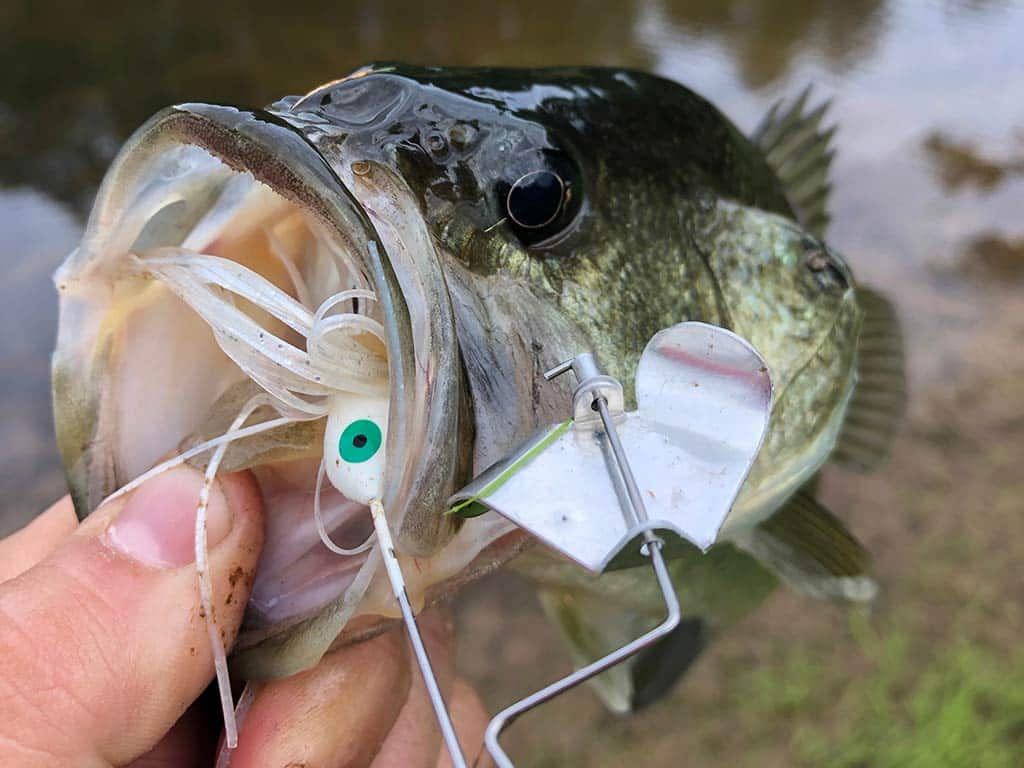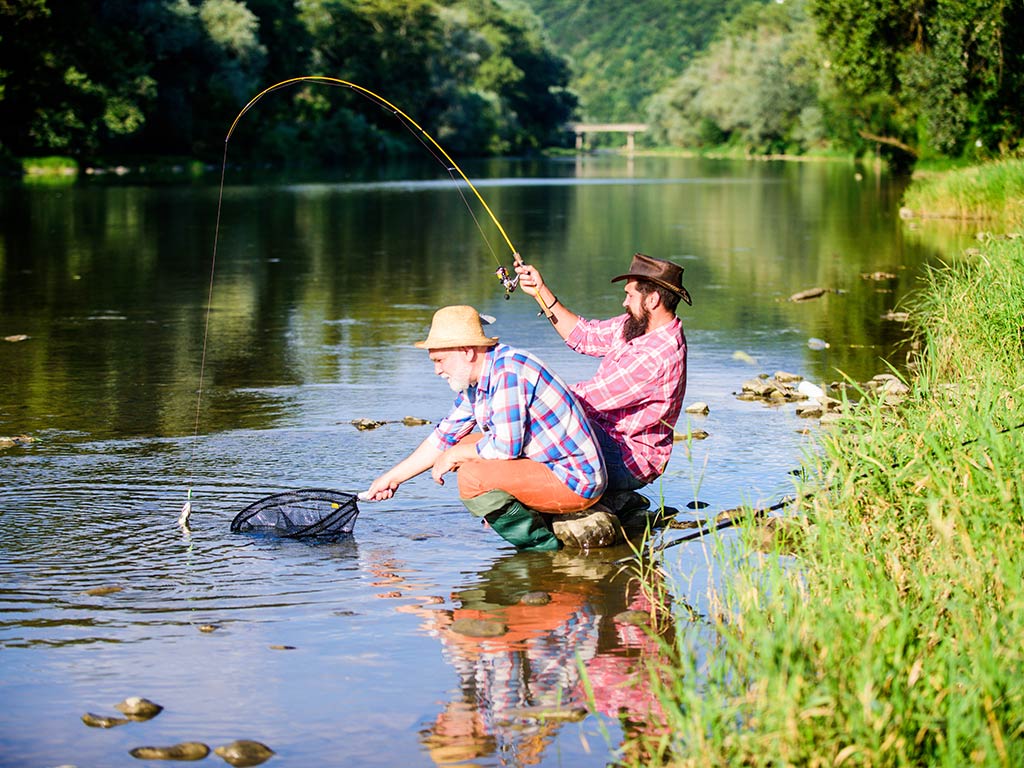Plenty of first-time anglers use spinnerbaits as a visually-enticing lure reflecting sunlight, then switch to something else when they perceive the conditions aren’t right. That’s unfortunate, as this tackle is a tried-and-true performer for locating Bass and generating strikes.

A well-placed spinner can produce reactionary strikes from lunkers hunting with more than their eyes. The speed you can fish these lures also allows you to cover lots of water compared to other gear, making them a good choice for locating the Bass and pulling them out from the cover. Let’s look at ways to increase your fun and productivity using spinnerbaits as something besides a sunlight-dependent lure.
How to Try Spinnerbait Fishing for Bass
If you’ve been around Bass fishing long enough, you’ve watched as different tackle gain and lose popularity. Many experienced anglers list spinnerbaits as top production lures for many reasons, but those new to Bass fishing can fall in love with this tackle for its ability to quickly locate the fish.
The lure design requires continuous motion to be effective, so you can make several casts from your boat, kayak, or shoreline more quickly than you can with some presentations – and still entice strikes. Most fishing techniques using a spinnerbait will keep the lure between 1–5 feet in depth, which is where you’ll find the Bass unless extreme temperatures force them deep. Those running depths make it a go-to lure for search casting in shallow flats, letting you discover where those lunkers are in the water column.
The cast and retrieve technique is perfect for search casting and is the first method anglers learn when using spinnerbaits. Here, you’ll cast out and retrieve the lure at medium speed. That’s it. It’s fast enough to keep the blades moving but slow enough that the body runs correctly through the water.
You can adjust the running depth by using a heavier lure and letting the spinnerbait sink to the desired depth before beginning your retrieval. Depending on the fishing conditions, you can use narrow Willow blades for extra flash or wider Colorado blades for more vibration through the water.
How to Go Spinnerbait Fishing in Murky Water Conditions
Many novice anglers will put away their spinnerbaits when the water is more opaque, which is a mistake. Spinnerbaits are an excellent choice for murky waters because they can attract the attention of Bass through means other than their visibility.

Some lakes are cloudy all the time, with suspended organic matter throughout the water column year-round. Other bodies of water turn turbid from murky waters in feeder streams, runoffs from storms, or when it turns over as the temperatures cool.
The key to a spinnerbait’s success in these conditions comes down to the blades on the lure. This component produces a flash, as light reflects off the surface and vibrates as it rotates while being pulled through the water. That vibration – or thump – works as a stimulant no matter the light conditions on the water.
How? In low-light and poor visibility conditions, Bass will use their lateral line to detect their prey and determine if it’s worth pursuing or striking. The line consists of canals or pores that run the length of the fish. It starts behind the gill plate and extends to the base of the tail.
Lateral lines detect pressure gradients, movement, and vibration in the water surrounding the Bass. The cupped shape of the blade will move water as it turns, generating the thumping the fish will detect with their lateral line. Colorado blades are larger than Willow blades, making them ideal in murky water conditions when vibration trumps visibility.
Spinnerbait Fishing in Cloudy or Overcast Conditions
Vibration also plays a role when it gets cloudy or overcast out on the water also. These conditions usually produce more active strikes than sunny days, when freshwater species head into heavy cover. But why?
Bass, and bait fish, have good vision. Dimmer water conditions due to clouds or an overcast sky favor the predator because the prey can’t see them as far off. These conditions help your spinnerbait look more like the bait fish you’re trying to imitate.
Another consideration is that Bass are sensitive to predators too. And sunny conditions tend to push them into some cover or deeper waters. They instinctively feel more secure when visibility is not as good, meaning they’ll hunt more aggressively.
Another consideration is oxygen. Bright days bring warmer water temperatures that hold less oxygen. It takes more energy to attack your lure, so the Bass is less active in sunny water conditions. Clouds blocking the sun can change the temperature by a couple of degrees, allowing the water to hold more oxygen. That will get the bait fish moving, which brings the predators out from the depths or cover that hold cooler water.
These factors combine to make Bass fishing more active in lower light conditions. The Bass you’ll be fishing for is more likely to move around, meaning they’ll investigate and swallow your spinnerbaits more often. These conditions can also generate a reaction strike as the spinning blades move near the fish. Cloud cover keeps the sun at bay, allowing the vibration from your spinnerbaits to “shine.”
Drawing Bass Out from Cover
Many anglers use their spinnerbaits to pull fish away from cover, making it easier to hook, retrieve, and swing those lunkers into the boat.

You’ll see Bass pros fishing grass tops with their spinnerbaits. If the grass is tall and poking out of the water, you can surface-cast the lure. Swapping to a Willow blade will help keep the movement from getting fouled up as often, and you can retrieve fast enough to keep the spinnerbait just under the surface of the water.
If the grass is beneath the surface, you can slowly roll the lure just above the top of the cover. Adding a jig movement by raising and lowering the pole tip during retrieval can draw that Bass out for a closer look. Colorado blades produce enough of a thump to alert the fish before the lure passes over their head.
Bumping cover is another productive technique when using spinnerbaits. Partially submerged blowdown and underwater stumps are great locations to try. The key is to touch structure with the lure, then retrieve the spinnerbait away from it. Placing your tackle that close will draw the interest of any Bass using the area for ambushing or staying cool.
You can also cast and retrieve along the edges of blowdown, docks, trees, and weed beds. The advantage here is you can reach a little deeper into the water column if you let the spinner sink. That will entice strikes from Bass sitting in deeper cover.
Spinnerbait Fishing: Well Worth a Try in All Conditions

Spinnerbaits are underutilized, but they shouldn’t be. There’s plenty more to these lures than just a flash from the sun and moonlight. You’ll want a solid performer out on the water, and this lure delivers. Largemouth Bass are known to exceed more than 20 pounds. In fact, the biggest Bass ever caught weighed 22 pounds and 4 ounces! Who knows? Your spinnerbaits might bring in the next world record…
Have you ever tried Bass fishing with spinnerbaits? How did you get on? We’d love to hear all about your experiences in the comments below!
The post Spinnerbait Fishing: The Complete Guide appeared first on FishingBooker Blog.
https://ift.tt/ELS8pO0
0 Comments
Enregistrer un commentaire